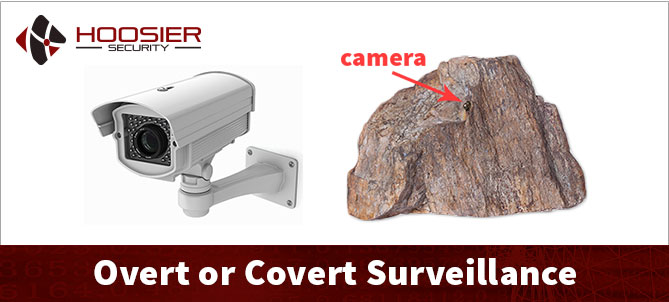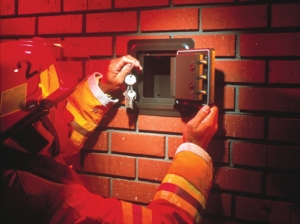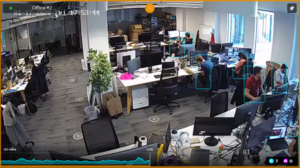What kind of video do you need?
There are all kinds of video cameras on the market today, enough to make your head spin. Quality always comes first in the units we install, as well as a thorough examination of how it will fit your business or residential needs. While it can be difficult to decide what’s best, don’t worry. That’s what Hoosier Security is here for: to help you find the perfect technology to meet your security challenges or issues.
First and foremost, security cameras are generally considered legal in the U.S. as long as they don’t preclude a person’s fourth amendment right to privacy.
There are two primary types of surveillance applications: overt and covert. Overt video means cameras are noticeable and can be seen within the protected premises. Even overt cameras have become aesthetic and may blend with the surroundings or environment; still noticeable but not obtrusive.
Overt cameras have an obvious deterrent factor. Studies have shown that video cameras are a powerful tool in the detection and prosecution of crimes. Overt cameras are also quite effective used in convenience stores, at entrances, in parking lots, remote areas, long hallways, and stadiums or sports arenas. Video cameras that can be seen also thwart robberies and may prevent crowd disruptions or even lessen incidents of fighting among patrons. Today, especially in public areas, people expect cameras and feel safer with their deployment.
Hidden camera applications
While cameras have become increasingly common in commercial businesses, apartment complexes, parks and other facilities, they cannot be used anywhere where the public has a reasonable expectation of privacy, whether overt or covert. They cannot, for example, be used in bathroom stalls, dressing rooms, locker rooms, changing areas or placed in another person’s house for you to view. The laws are sometimes not as clear cut as they should be, but Hoosier Security stays up to date on any new legal findings or regulations with regards to the placement of video.
Covert or concealed video has its place in some security applications. It’s considered covert when cameras can’t be identified or seen. These cameras can be as small as a pen or writing instrument and pinhole units can be obscured in a stuffed animal, cardboard box or even disguised as a landscaping rock. Covert video is especially conducive to retail operations, to prevent theft and to protect employees, customers and assets. For these applications, they may be hidden in ceiling tiles or other areas. They can also be used to enhance operational efficiencies and used for customer service training. Because of their small size and concealed application, they may be used in hospitality or anywhere there is an architectural concern and need for an understated camera with a small footprint or innocuous positioning. Covert surveillance cameras may also be used to assist with the detection and prosecution of vandalism, senior neglect, child abuse, harassment, and stalking.
Hoosier Security advises users to inform employees and customers about their use of surveillance monitoring and to communicate the intention of both traditional and covert cameras.
We can help you with all your surveillance needs and determine the right camera and the proper specification. Contact us today to learn more.
Do you have a question about Overt or Covert surveillance?
[formidable id=”7″ minimize=”1″]














